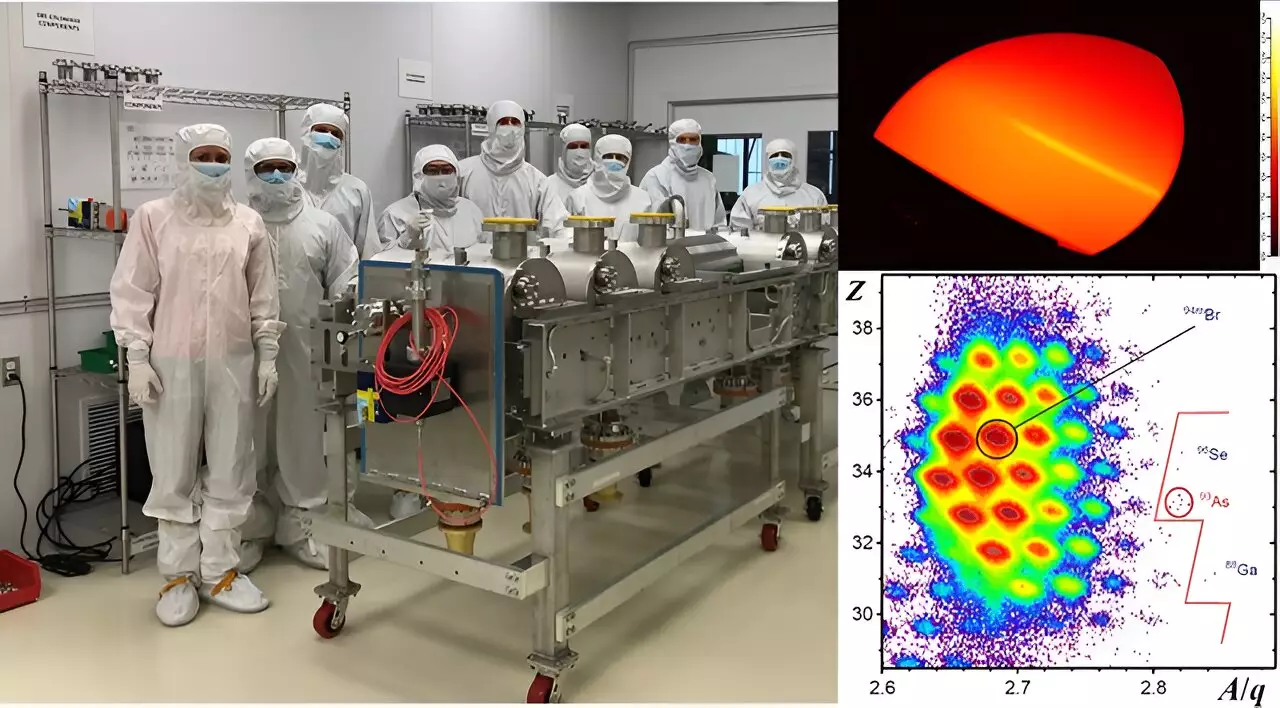Recent advancements at the Facility for Rare Isotope Beams (FRIB) mark a transformative moment in the field of isotope research. The team of scientists and engineers has successfully accelerated uranium ions, achieving a historic output of 10.4 kilowatts of continuous beam power. This monumental task is not just an isolated event; it represents a significant stride forward for scientific inquiry, as detailed in the latest publication in the journal *Physical Review Accelerators and Beams*. The implications of this success will resonate throughout various scientific disciplines, paving the way for extensive research opportunities that were previously beyond reach.
Uranium poses unique challenges for accelerator technology. As the most complex element to accelerate, its manipulation has hindered progress in several high-priority research fields. The National Academy of Sciences and the Nuclear Science Advisory Committee have identified over 17 key scientific programs reliant on rare isotope beams, with uranium forming the core of more than half of these initiatives. This demand underscores the element’s significance, as its fragmentation and fission yield a diverse array of isotopes. The successful acceleration of a high-power uranium beam not only represents a technological triumph for FRIB but also signifies a vital resource for ongoing and future research.
The operational capabilities of the newly accelerated uranium beam bore immediate fruit: within just eight hours, researchers at FRIB managed to produce and identify three isotopes that had never been observed before—gallium-88, arsenic-93, and selenium-96. This accomplishment was only possible through the stable functioning of various accelerator components at peak efficiency. By successfully innovating upgraded technologies, including a unique liquid-lithium stripper and advancements in uranium production methods via the Electron Cyclotron Resonance ion source, FRIB has laid the groundwork for further exploration into the nuclear landscape.
At the heart of this achievement is a sophisticated superconducting linear accelerator featuring 324 resonators housed in 46 cryomodules. This intricate design, combined with state-of-the-art innovations, equipped FRIB scientists to conduct simultaneous acceleration of three charge states of uranium after undergoing a liquid-lithium stripping process. This novel methodology not only achieved unprecedented power levels for uranium but also illuminated paths for future research endeavors in rare isotope applications.
This groundbreaking research was not conducted in isolation. The collaborative efforts among researchers from the United States, Japan, and South Korea highlight the global stakes involved in isotope research and the importance of shared expertise. The success at FRIB is anticipated to inspire an influx of studies and potential discoveries in nuclear physics and other related scientific fields.
The advancements demonstrated at FRIB represent a pivotal moment for isotope exploration. The implications extend beyond mere academic curiosity, potentially fostering breakthroughs in energy production, materials science, and medical applications. As researchers continue to delve into the uncharted territories of the nuclear realm, the potential for discovery and innovation remains immense.


Leave a Reply
You must be logged in to post a comment.